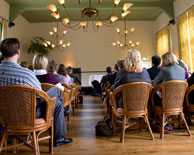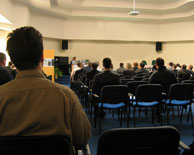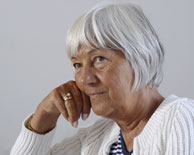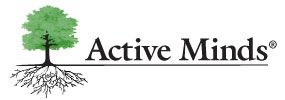Wine
Overview
The story of wine is indeed as old as the hills used to grow the grapes from which it is made. It is a tale intertwined with the influences of civilizations, agricultural methods, cuisines and more. Join Active Minds as we describe the history of wine as well as give an overview of the various types of wine and their most salient characteristics.
Key Lecture Points
- Wine has a long history, one which is intimately entwined with religion, commerce and empire. The earliest evidence of winemaking comes from the Caucasus region where archaeological finds suggest winemaking as early as 6000 BCE. Since that time, wine spread to Persia, Mesopotamia and Egypt before coming to Europe via the Greeks and later the Romans. Europeans found grapes in the New World, but eventually chose to bring European grapes to the Americas in the 1500s (as well as to Africa and Australia).
- The interaction of New World grapes with the Old World was catastrophic. In 1863, phylloxera vastatrix was inadvertently introduced to European vineyards. A louse that devoured the roots of grapes, phylloxera nearly wiped out native European grapes before an American horticulturalist, Thomas Munson, saved them by grafting heartier American rootstock to the European vines.
- Prohibition in the US undermined, but did not completely destroy, a growing American wine industry. While wine production was curtailed by the Volstead Act, it was permitted for the production of wine for religious practices. Additionally, individuals were permitted to produce wine for personal use, triggering widespread amateur winemaking in the US.
- Today, wine is the number one finished agriculture product in retail value in the US. The US is the 4th largest wine producer in the world and its wines (85% from California) are highly regarded around the world. The US leads the world in consumption of wine. About a third of Americans drink wine.
- Climate change is disrupting the wine industry in various ways. More extensive wildfires that have caused major harm to California’s vineyards in recent years, and warming temperatures are making it more difficult to grow many grape varieties in traditional wine regions while also opening new areas at higher latitudes and elevations to wine production.
- In the last three decades, Colorado has emerged as a significant producer of fine wines with unique characteristics due to our states specific climate and growing conditions (terroir).
Discussion Questions
- How are the history of religion and the history of wine intertwined?
- During Prohibition, amateur winemakers were permitted to make up to 200 gallons of wine for personal use. Do you have any recollection of amateur winemakers from 8this or any other era? Describe.
- Have you ever visited a winery? Where? What were your impressions?
More to Explore
- Glossary of wine term Click here
- Brief History of Wine Click here
- Wine pairings with food Click here
- How to Drink Wine (NY Times) Click here
- Wine films Click here
Books for Further Reading
- Taber, George M. Judgment of Paris: California vs. France and the Historic Paris Tasting That Revolutionized Wine (paperback). Scribner, 2006. 352 pages. Taber tells the story of the 1976 surprise wine tasting that gave California its reputation for good wines.
- Taber, George M. To Cork or Not to Cork: Tradition, Romance, Science and the Battle for the Wine Bottle. Scribner, 2007. 288 pages. Taber explores wine’s controversial question—what should be used to seal a wine bottle?
- Robinson, Andrea Immer. Great Wine Made Simple. Broadway Books, 2005. 336 pages. The author is one of the few women Master Sommeliers in the world. She provides an easy-to-read introduction to the understanding and enjoyment of wine.
- McInerney, Jay. The Juice: Vinous Veritas. Vintage, 2013. 304 pages. Fun and entertaining essays on wine by the popular novelist whom slate magazine called the best wine writer in America.
- Bonne, Jon. The New Wine Rules: A Genuinely Helpful Guide to Everything You Need to Know. Ten Speed Press, 2017. 152 pages. An accessible guide to enjoying wine more by taking a more thoughtful and knowledgeable approach.






Copyright © 2004-2025 Active Minds®. All rights reserved.
